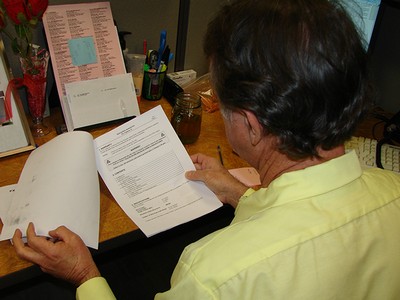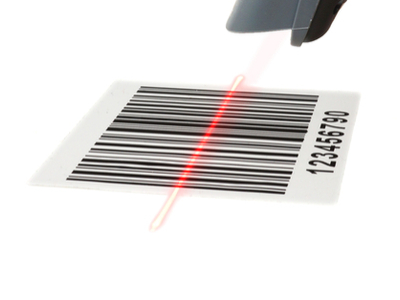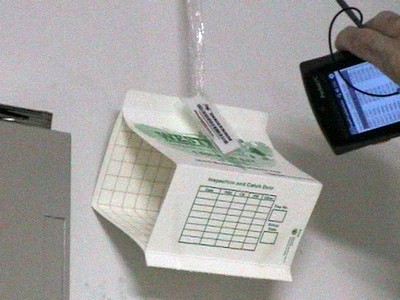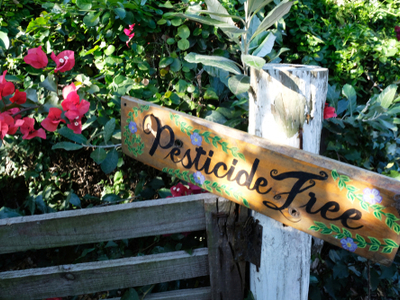Management Tools
An in-depth understanding of the roles and capabilities, as well as the availability of management tools is
necessary to implement a successful IPM Program in a large public agency such as the County of Santa Clara .
There are several facets to system management. It is important to understand policy and procedure. It is also important to understand why and how IPM interacts with County functions. Changing management technology must also be evaluated for potential positive program impacts.
The program's administrative guidelines and procedures provide user groups with an in-depth understanding of policy and management, and their roles and responsibilities necessary to implement a successful IPM Program for a multi-jurisdictional public agency.
User groups (departments) are responsible for planning, budgeting and executing IPM projects in consultation with the County IPM Manager. The implementation plan is a living document where components are customized for each facility as needed. Department IPM coordinators ensure that plans are updated annually, and budgets are planned in anticipation of existing project maintenance or expected new demonstrations or projects. The County IPM manager assists departments to explore and secure grants or funding opportunities.
The Department IPM Implementation Plan is a working document that includes following components:
Planning and Evaluation: Identify needs for each year, communicate plans to department heads for approval, develop the IPM service plan, maintain records of pesticide use exemptions, maintain data and document Control (IPM Log Book - Record Keeping - Electronic), submit IPM activity/pesticide use reports, ensure quality control through periodic auditing of IPM projects.
Budgets and Economics: Continuously improve and make IPM projects feasible and economical, find alternative sources of funding, write grants and follow up, work to negotiate IPM clauses for new leases and lease renewals, capital improvement projects, contract provisions, lease negotiations, etc.
Safety and Communication: Train and communicate with facility managers, department IPM coordinators/safety coordinators and facility tenants, procure qualified IPM contractors, emphasize overall pesticide use reduction.
Selecting qualified vendors to provide IPM products and services - The County has developed comprehensive purchasing guidelines (PU) and launched a proactive approach for contracted or in-house IPM services for structures, urban turf and landscape, wildlife pest management, aquatic pest management, rights-of-way vegetation management, and indoor plant maintenance.
The Request for Proposals (RFP) for each IPM subject matter reflects the underlying objectives to establish green-products purchasing and services according to Bay Friendly landscape principles, maintenance practices and related IPM. For greater regional adoption, model RFP's are also made available to other interested public agencies at no cost.
Monitoring toxic chemical reduction in purchasing - All pesticide products and pest control services that include pesticide applications must comply with the IPM ordinance and can only be purchased through the County procurement department with a review and approval by the County IPM manager. The approval and exemption process mandates that departments/user groups requesting pesticide use exemptions will demonstrate good faith efforts/alternative methods to mitigate pest problems prior to any such request. Use of petty cash or direct pay methods are prohibited and controlled at the purchasing level.
Inclusion of IPM policy directive and environmental preferable purchasing (EPP) in all County contracts - The County is also continuing the inclusion of IPM ordinance requirements in all new and renewed County contracts and provisions related to leases, easements, capital project planning, design, and renovations. This has strengthened the precautionary principles/concepts to mitigate pest problems before they occur. The IPM requirements are also included for all buildings undergoing LEED certification. An example is inclusion of IPM structure and landscape requirements in the design of the County's crime lab, which is LEED Gold Certified.
The use of digital governance (DG) technology in complex program/project management increases communication among and between individuals and institutions.
Some of the operational/management benefits of DG are:
- Information is acquired, analyzed and used strategically for program purposes
- Well-informed decision-making is informed by the timely information
- Automation of repetitive tasks, simplifies and streamlines complex multijurisdictional projects, improves efficiency, consistency, performance, productivity and reporting by reducing time and the risk of clerical errors, decreasing cost of governance processes and reducing time and energy required to maintain data and documents
- Complements existing efforts and processes to improve governance
- Initiates new mechanisms for improved service delivery
- Makes user groups more responsive to everyone´s needs
- Reduces paper usage in data maintenance
In 2002, as the County began development of the IPM Program, DG tools were deemed critical to providing effective and efficient multijurisdictional program management and information dissemination. This included tools such as a website and cloud-based IPM information and pesticide use reporting. In 2002, as the County began development of the IPM Program, DG tools were deemed critical to providing effective and efficient multijurisdictional program management and information dissemination. This included tools such as a website and cloud-based IPM information and pesticide use reporting. Tablet/mobile based software, bar code scanners and web-based, spatial mapping and data management applications have been added to program tools.
An educational website provides a less expensive and more flexible resource than print media. It serves as an information clearing house, where content can be updated through a content management system. It offers the convenience of research on subject matter, eliminates geographical barriers and reaches a wider audience in real time. SCC IPM website is designed to meet these objectives. It allows for real-time linking to additional information resources.
Sustainable pest management requires an integrated approach. Pesticides are one of many tools used in IPM. Most non-agriculture and structural pest management focuses on pesticide applications for right-of-way, turf and landscape, rangelands and indoors. Understanding the initial pesticide distribution in the environment at the landscape scale requires information on pesticide use practices. Timely data such as the pesticide identity, amount, target pest and site can be enormously useful both in the protection of human and environmental health.
Accurate information can help provide better risk assessments and illuminate pest management practices that are particularly problematic to target the development of alternatives. When toxic chemicals must be used, the data helps managers to employ training and technologies specifically designed to protect applicators, workers, and the environment. It is also useful when making short and long-term policy and budgeting decisions related to IPM and best management practice.
SCC Integrated Pest Management – Pesticide Use Reporting System (IPM-PUR), a web-based relational database discusses framework, user data entry process, provides analytical tools for IPM decision making processes, cost-economics, worker safety, environmental data, compliance to signage posting, and data for regulatory reports for structural and non-agriculture pest management.
The IPM program in collaboration with County's Technology Services and Solutions Department developed the IPM-PURS, a central data bank of pest management activities and pesticide use information (non-production agriculture and structural) that includes most of the information mentioned above to facilitate analytical reporting by applicators, departments focusing on pesticide use reduction, as for meeting legal and administrative reporting requirements. Other requested fields (not mandatory) available in the reporting system includes weather conditions, information on neighboring locations, protective equipment used, nearby wells, sensitive areas (water, wetlands, schools), and water application.
Pesticide use data captured from SCC IPM-PUR has a wide range of uses in both the environmental and health sectors including for practicing IPM and for water quality, drinking water, fish and wildlife, human epidemiology, risk assessment, public health, worker safety, and food quality protection.
We expect its greater adoption, as we improve system capabilities and interfaces including GIS/GPS, and make it available for adoption with accessibility features in the public domain.
In 2008, a trial project used mobile/tablet-based software, bar code scanners and web-based applications to conduct structural IPM inspections. The successful trial was followed by a full-scale adoption in 2009. The adoption of this technology is a move from primarily paper-based methods of pest traceability to consolidated digital methods that provide greater immediacy and accessibility of temporal and spatial pest data.
The application of mobile/tablet-based digital governance technology in structural IPM allows:
- Accountability for work done, time spent on site, and observations made
- Transparency of service, giving the IPM professional the control to effectively monitor and track exactly what is being done on site real time
- Transition of all information from the device to tables and graphs, which allows the system operator and the client to monitor the infestation levels
- Time-stamps of each station inspected that can be monitored whenever the IPM professional scans the barcode attached to that station
- Data analysis and trending
- More efficient implementation of a systematic way of inspecting and monitoring, as designed under the general IPM plan/service index in the device
- The setting of pest parameters for instant alerts when pest thresholds are breeched
- Information to examine which pesticides, if at all used, accounted for most of the increase, and the underlying causes of this increase. These factors are important for identifying emerging pest management challenges and focusing attention on strategies for their resolution
- Development of a service index which is versatile and can be modified to cater to the requirements and specifications of the various sites
- Data capture in real-time and presentation in a manner that illustrates conditions conducive to pests, a primary and the most important element of pest control service
- Information provisions to the clients (facility management groups) in real time and as a snapshot on conditions conducive to pests to assist pest control operators in solving pest problems and preventing reoccurrence
- Pest control operator ability to manage multiple sites, monitoring stations, define the job, schedule and execute tasks, generate reports and follow up
- Department IPM coordinator's ability to educate building occupants, budget managers, and policy makers on their role in pest management and related environmental issues
In practice, the mobile/tablet-based inspection tool collects field observations on a unique handheld platform, synchronizing data to a cloud-based server, then allowing a data modeling tool to track trends, and predict and counter potential problems before they can become serious. The data and reports are made available to department IPM coordinators/facility managers through a desktop or mobile application for pest trend analysis, spatial distribution, and rapid response and mitigation efforts for sanitation, housekeeping and maintenance.
The County of Santa Clara Board of Supervisors adopted the IPM and pesticide use reduction ordinance directing the County Executive Office to develop an IPM Program and start the process of promoting reduced-risk pest management practices.
The intent and purpose as stated in the ordinance:
The County, in carrying out its operations, finds it necessary from time to time to use pesticides on County property. The intent of this division is to protect the health and safety of County employees and the general public, the environment, and water quality, as well as to provide sustainable solutions for pest control on County property. The Board of Supervisors hereby finds and declares that it shall be the policy of the County of Santa Clara to eliminate or reduce pesticide applications on County property to the maximum extent feasible. Preference shall be given to available non-pesticide alternatives, where feasible, before considering the use of pesticides on County property.
Link to the full ordinance can be found here:
The intent of the IPM program is to protect health and safety, the environment, and water quality, as well as to provide sustainable solutions for pest control on County property. The SCC IPM ordinance addresses IPM program goals and duties, pesticide use, posting requirements, and record keeping.
It also restricts the use of following groups of pesticides:
- Toxicity Category I or II pesticide products.
- Any pesticide containing a chemical identified by the State of California as a chemical known to the State to cause cancer or reproductive or developmental toxicity pursuant to the California Safe Drinking Water and Toxic Enforcement Act of 1986.
- Pesticides identified by the State of California on the Groundwater Protection List (Food and Agricultural Code § 13145(d)).
- Pesticides classified by active ingredient as organophosphate type pesticides as identified by the United States Environmental Protection Agency (Office of Pesticide Programs, Document 735-F-99-14, May 1999), or California Environmental Protection Agency, Department of Pesticide Regulation, Chemical Inquiries Database.
- Pesticides containing carbamate-type chemicals (California Environmental Protection Agency, Department of Pesticide Regulation, Chemical Inquiries Database).
- Any pesticide classified as a human carcinogen, probable human carcinogen or possible human carcinogen by the United States Environmental Protection Agency, under procedures established in "Proposed Guidelines for Carcinogen Risk Assessment," EPA/600/P-92/003C, April 1996, or equivalent documents.
- Any pesticide group officially designated by the California Environmental Protection Agency Department of Pesticide Regulation or by the United States Environmental Protection Agency as posing significant hazard to human health or the environment.
Enduring IPM Leadership and Implementation through:
- IPM System Development and Project Automation
- Department IPM Implementation Plans
- Selecting Qualified IPM Vendors to Provide IPM Services
- Adopting Proven Reduced Risk Pest Management Alternatives
Development of Relational Pesticide Database through:
- Evaluation and Elimination of Hazardous Pesticides
- Provision of an “Approved List of Pesticides”
- Analysis of Specific Pesticide Use for Overall Use Reduction
Support the Health and Welfare of the Environment through:
- User and Beneficiary IPM Awareness, Education, and Training
- Minimizing or Eliminating Pesticide Exposure
- Pest-Free Environments
- Pesticide-Use Reduction
Provide Financial Impact Studies and Quality Assurance through:
- Record Keeping, Document and Data Control
- Qualitative and Quantitative Project Management
- Performance Management
The IPM program is an inclusive process, administered through the County IPM Manager, the Office of the County Executive, with the manager being advised by an IPM technical advisory group (TAG). The IPM-TAG meets (open to public) at least four times per year to review the County's IPM program and provide comments to the County Executive.
The program provides coordination to several user departments in various pest management and pesticide-related projects. Primary department users are: Facilities and Fleet, Health and Hospital, Roads and Airports, Parks and Recreation, and Social Services Agency. Each user is represented by a designated department IPM coordinator who provides coordination in consultation with the County IPM manager on various sustainable structural and non-production agriculture IPM related projects and develops alternatives to chemical intensive structural and non-agriculture pest management based on the need of their user group.
Santa Clara County took a cautious approach by restricting use of certain categories of pesticides. In 2004, pesticides in use or intended to be used by departments were screened based on set criteria to create an approved list of pesticides. Per the priorities established in the IPM Ordinance, pesticides are to be used as a last resort and are approved for use through a pesticide use exemption process. Review of the approved pesticide list is a continuous process based on data availability from variety of sources. As new data is made available, the County IPM manager reviews additional products based on criteria adopted by the County.
Department IPM Coordinators contact the County IPM manager for necessary approval prior to pesticide use. A pesticide use exemption form provides an explanation for such requests. The County IPM manager works with the department to determine the necessity of pesticide usage and related non-chemical alternatives, to achieve overall pesticide use reduction. Additional documentation on the approach to pesticide selection criteria can be found here.
A variety of pesticides are used in the US in production agriculture, non-production agriculture, and urban environments. People use insecticides, herbicides and chemical fertilizers to eliminate insects and weeds from their gardens or buildings, but these limiting agents have the potential to harm our health and the environment.
While often beneficial, pesticides are risky by nature. Misuse of pesticides and accidents involving pesticides occur regularly. Even when used correctly, some pesticides can harm the environment and non-targeted living things. Because of this, a rational approach to pesticide use must include a risk analysis.
Pesticide risk indicators (PRIs) are tools for assessing, comparing, and communicating the characteristics and effects of different pest control products and methods. They are used to promote "reduced-risk" pest management practices, to provide guidance to pest control professionals, farmers/growers and other property managers in choosing among pest control options, to help researchers and policy-makers track trends in risk reduction, and as the basis for "ecolabeling" systems, designed to influence consumer opinion and market behavior. Typically, pesticide risk indicators generate an index or ranking of pest control options or compare pesticide risks over time or in different places. PRIs are also known as "pesticide impact assessment systems," "pesticide ranking systems," and by other names.
In 2002, the County in collaboration with Cornell University performed a pesticide environmental risk analysis, developed risk indicators and pesticide selection criteria and evaluated 350+ pesticide products. This resulted in an approved list of reduced-risk pesticide products. The County also promoted this project for various pest management user groups throughout Bay Area counties.




